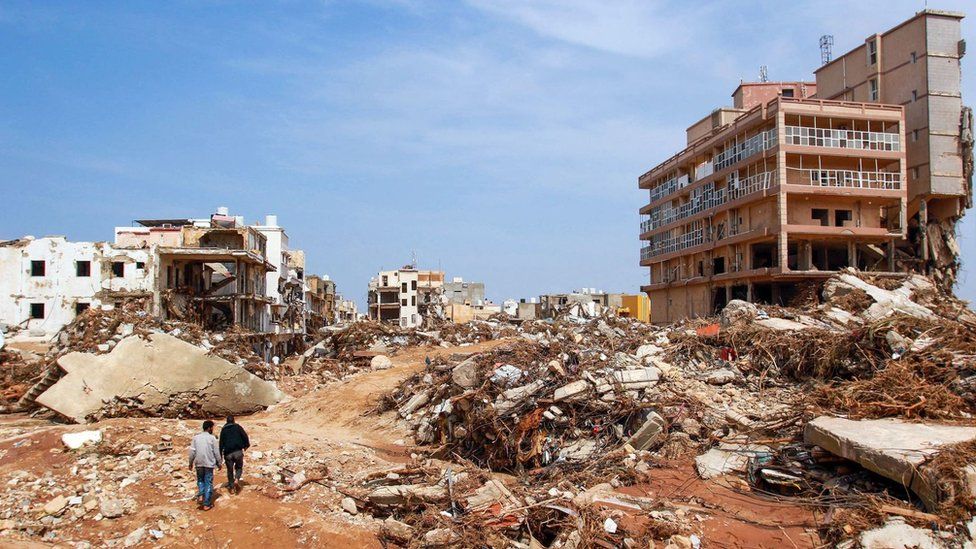-

-
-
Loading

Loading

More than 5,000 people have been confirmed dead and thousands are missing following devastating floods in the port city of Derna in Libya. The floods caused entire neighborhoods to disappear into the sea as a massive torrent of water swept through the city, reminiscent of a tsunami. Survivors in the city have reported that whole families were washed away, describing the situation as "beyond catastrophic." The BBC's Visual Journalism team, along with BBC Verify, has analyzed some of the reasons behind the catastrophic damage caused by the floods. The flooding was caused by Storm Daniel, a medicane or Mediterranean hurricane-like system that struck Libya on Sunday. Within a span of 24 hours, the storm brought over 400mm of rain to parts of the north-east coast, which is an extremely high amount for the region. On average, the region sees only 1.5mm of rain throughout the entire month of September. According to Libya's National Meteorological Centre, this rainfall record sets a new record. Satellite data shows the extent of rainfall across the region, although ground measurements in many places indicate even higher amounts. While it is still too early to definitively attribute the severity of the storm to rising global temperatures, climate change is believed to be increasing the frequency of the strongest medicanes. Climate experts, such as Prof Liz Stephens from Reading University, suggest that climate change intensifies the rainfall associated with these storms. The Wadi Derna river, which runs from Libya's inland mountains through the city of Derna and into the Mediterranean, played a significant role in the flooding. Normally dry for most of the year, the river was overwhelmed by the heavy rain, causing two crucial dams to fail and several bridges to be destroyed. Witnesses reported hearing a loud blast before the city was submerged in water. The upper dam had a storage capacity of 1.5 million cubic meters of water, while the lower dam could hold 22.5 million cubic meters. The weight of the water combined with the downhill movement created immense power, resulting in water levels reportedly reaching up to three meters in some areas. Experts are uncertain whether the extreme rainfall exceeded the dams' capacity or if the condition of the structures played a role in their failure. Observations suggest that the dams are likely made of soil or rocks, which are not as strong as concrete. Hydraulic engineering expert Prof Dragan Savic from Exeter University explains that while concrete dams can withstand overtopping, rockfill dams usually cannot. Structural engineer Andrew Barr believes that the upper dam failed first, causing water to flow towards the lower dam and eventually overwhelm it, leading to the catastrophic flooding of the city. A research paper published last year on the hydrology of the Wadi Derna Basin cautioned that the area has a high potential for flood risk and that regular maintenance of the existing dams is necessary. However, the political instability in Libya may have hindered the upkeep of the dams. As rescue efforts continue in Derna, survivors have reported distressing scenes, with people using shovels and their own hands to recover bodies from beneath the ground. The situation has been described as "like doomsday." The BBC Verify team is investigating the flooding in Derna and invites further inquiries from the public.